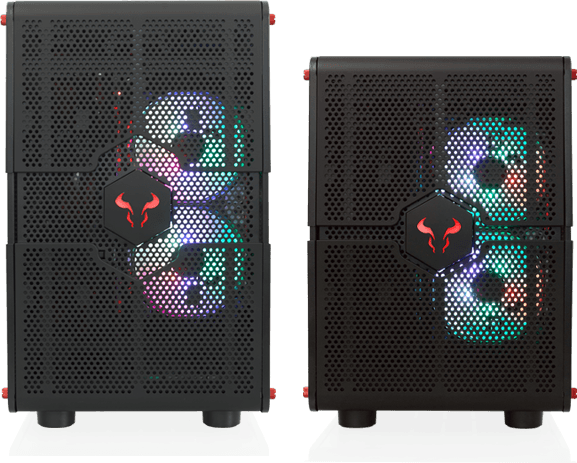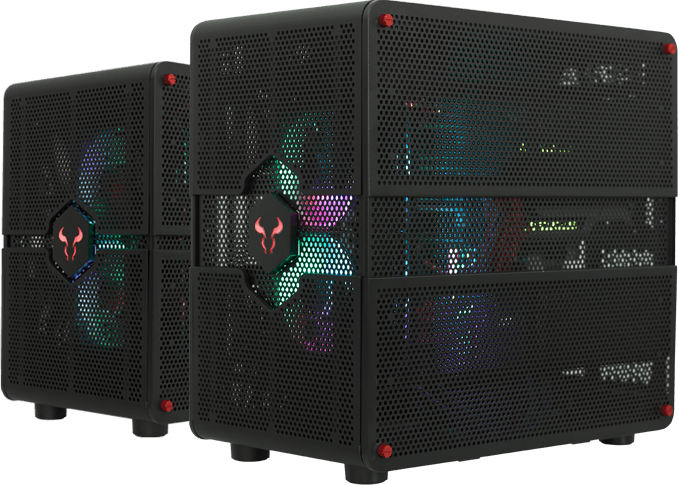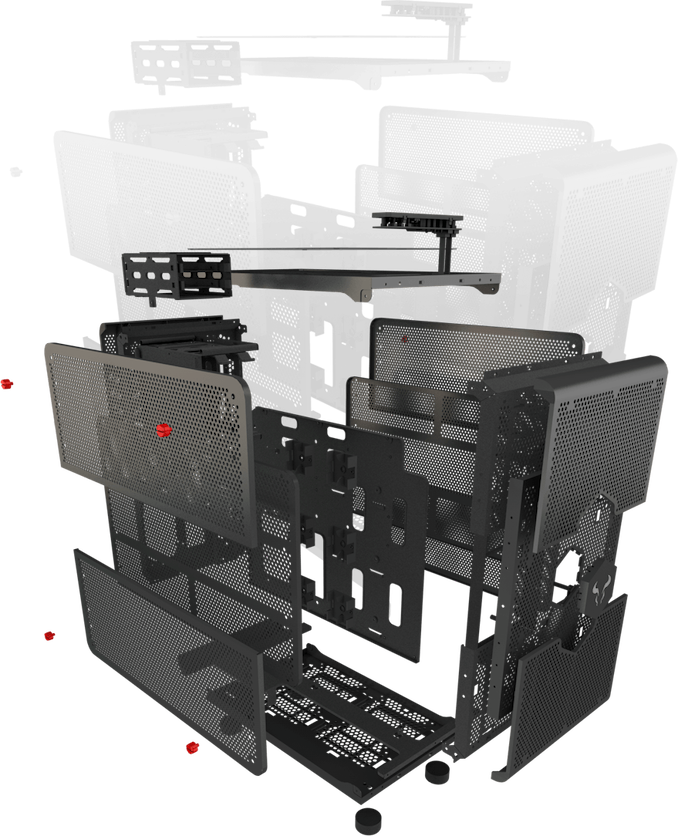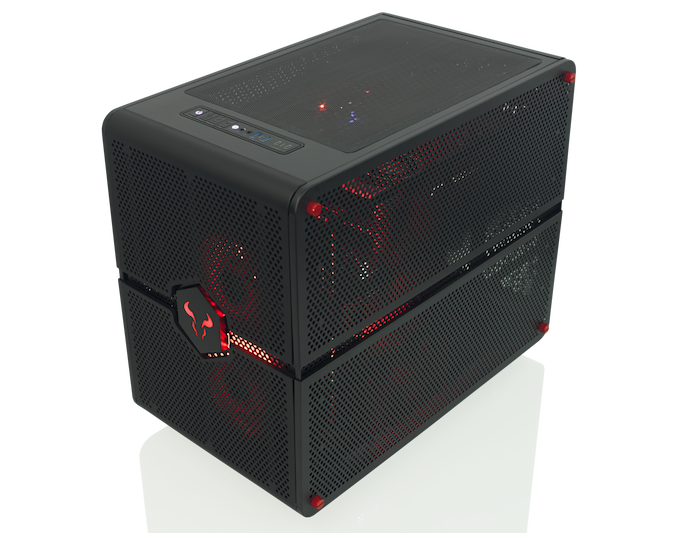CES 2019: Riotoro’s Morpheus Convertible Case, Growing & Shrinking
by Ian Cutress on January 7, 2019 1:00 PM EST- Posted in
- Cases/Cooling/PSUs
- Trade Shows
- Riotoro
- CES 2019
- Morpheus

One of the features of the modern PC trade show is that someone somewhere is going to show off a chassis that either does something crazy, looks crazy, or makes you go ‘eh, what?’ (ed: it gets us every time). In recent memory that includes the In-Win case that stood up and presented itself, the iBuyPower Snowblind LCD-as-a-case-panel from last year, and a 40kg aluminium behemoth, another In-Win design. This time, it’s Riotoro’s turn.
Morpheus is all about the mighty morphing. If the normally micro-ATX chassis isn’t big enough, then users can literally pull the bottom half of the case away from the top of the case, add a support connector, and rebuild the design in E-ATX mode. These modes are called Mid-Tower and Mini-Tower. Moving from one to the other changes the height from 15.1 inches to 17.5 inches.
In order to make assembling easier, Riotoro has gone for a dual chamber design, with Motherboard/CPU/GPUs in one half and PSU/Storage in the other. This helps for cable management and cooling when everything is in place. The motherboard uses an upside down placement, meaning the GPUs are at the top, so that should be taken into account. Aside from supporting bigger motherboards in the larger mode, the chassis can also take up to 4 GPUs and another couple of SSDs with two more tool less 2.5” drive bays.
The case comes with two RGB fans fitted to the front and one in the rear. The front fans can be used in both modes. In Mid-Tower mode, a total of six 120/140mm fans can be used, while Mini-Tower also gives six, but the reduced z-height doesn’t allow for liquid cooling on the top of the case.
While the case looks like it is full of holes, there are dust filters on the front, an acrylic panel on the top, and magnetic dust filters in other places. The front panel has two USB-C ports, two USB 3.0 Type-A ports, and the whole case is a toolless design.
The only response I really have is ‘eh, what?’. It’s a neat concept and all, but don’t most users know the size of their build before buying the chassis? Now I can imagine that the chassis is retained through multiple builds, and users might go between a smaller system and a larger system, but where exactly do I keep the extra parts while in the small mode? I can imagine losing them, or putting them in box that I won’t remember a few years down the line.
Perhaps I don’t get it. Do you?



















7 Comments
View All Comments
JoeyJoJo123 - Monday, January 7, 2019 - link
Looks pretty sweet. I've always thought a full-mesh case could be excellent (if done right), but I'm concerned about its structural stability. It's small enough to look to be portable, but if it gets bent out of shape in transit, then what good is the case?Will wait for a review before coming to a conclusion though.
JoeyJoJo123 - Monday, January 7, 2019 - link
Oh, and yeah, the expanding/contracting nature might be OK for some kind of waterloop builds, but yeah, the vast majority of users won't use this feature. May have just been better off as a fixed minimum size case.meacupla - Monday, January 7, 2019 - link
Wow, this case takes Mesh and then turns it up to 11.Mr Perfect - Monday, January 7, 2019 - link
Yeah, that's kind of weird. Proof of concept, I suppose.Although, this sort of tech could find a niche in the mITX space. The size range of ITX cases is pretty wide, ranging from tiny ones that require a SFX PSU and don't support a GPU at all, to large cases that handle full ATX PSUs and can deal with three slot deep GPUs. Buying one case and adjusting it to what you where putting in a particular ITX build might be worth it.
wolrah - Monday, January 7, 2019 - link
Depending on the price and build quality I could see myself being in the market for something like this.I really want to build a compact gaming machine, both for easier LAN travel and just to slightly declutter my computer room, but at the same time I'm always concerned about wanting to expand in the future.
This would allow me to shut up that voice that's always saying "but what if I need more expansion?"
vicbee - Monday, January 7, 2019 - link
Sounds to me like the top guy had a bright idea no one dared to challenge him on.limitedaccess - Tuesday, January 8, 2019 - link
I have a different take on this. What I wonder is the cost difference between having a single line that can cater to both mATX and ATX builds versus having separate ones, especially for smaller volume mATX in the DIY market.At the same time you can market the dual size feature to the buyers as well.